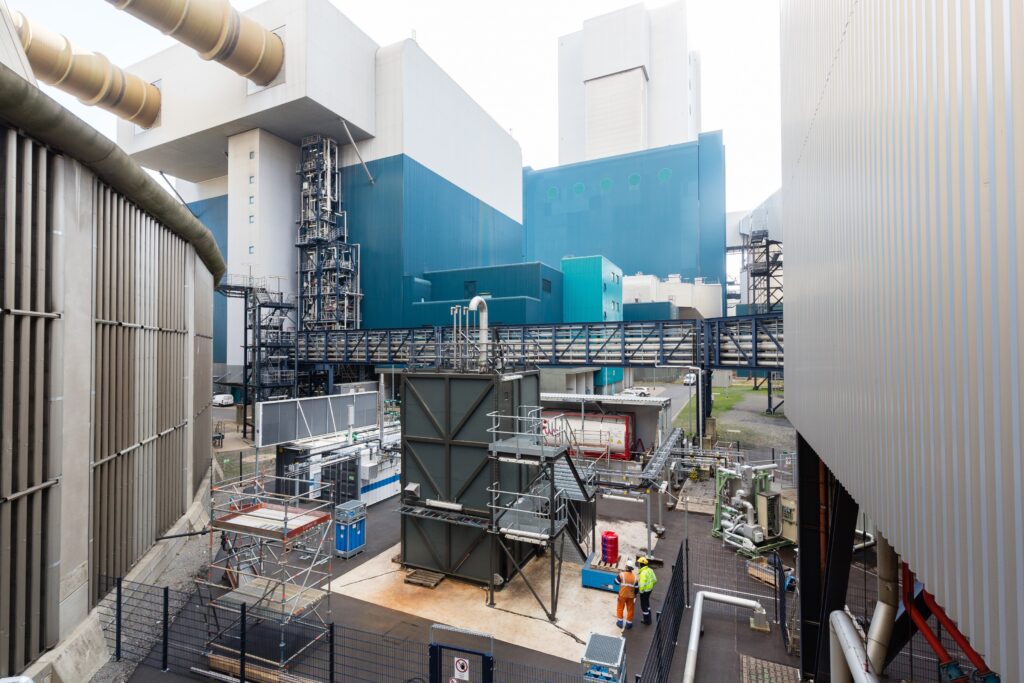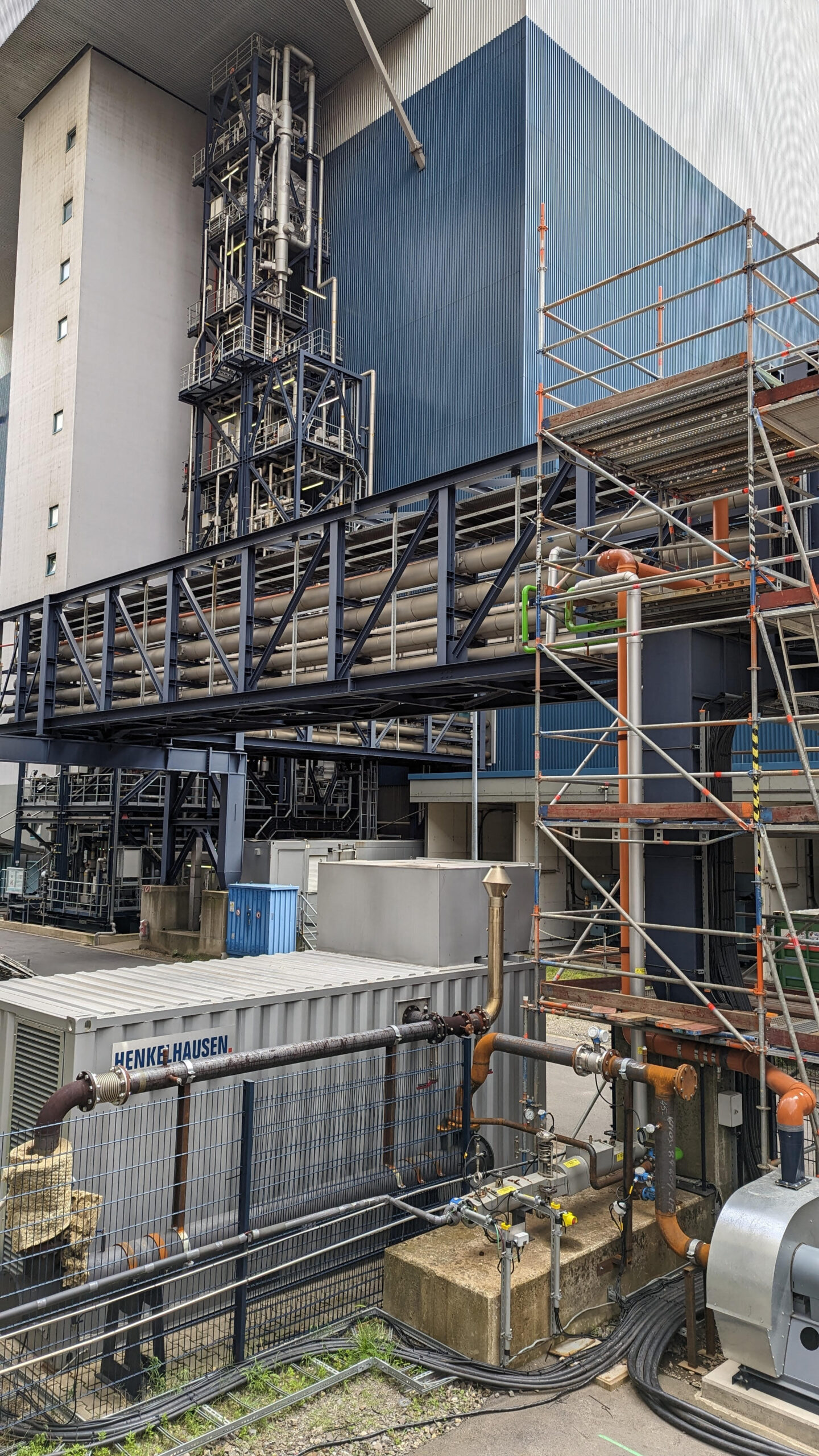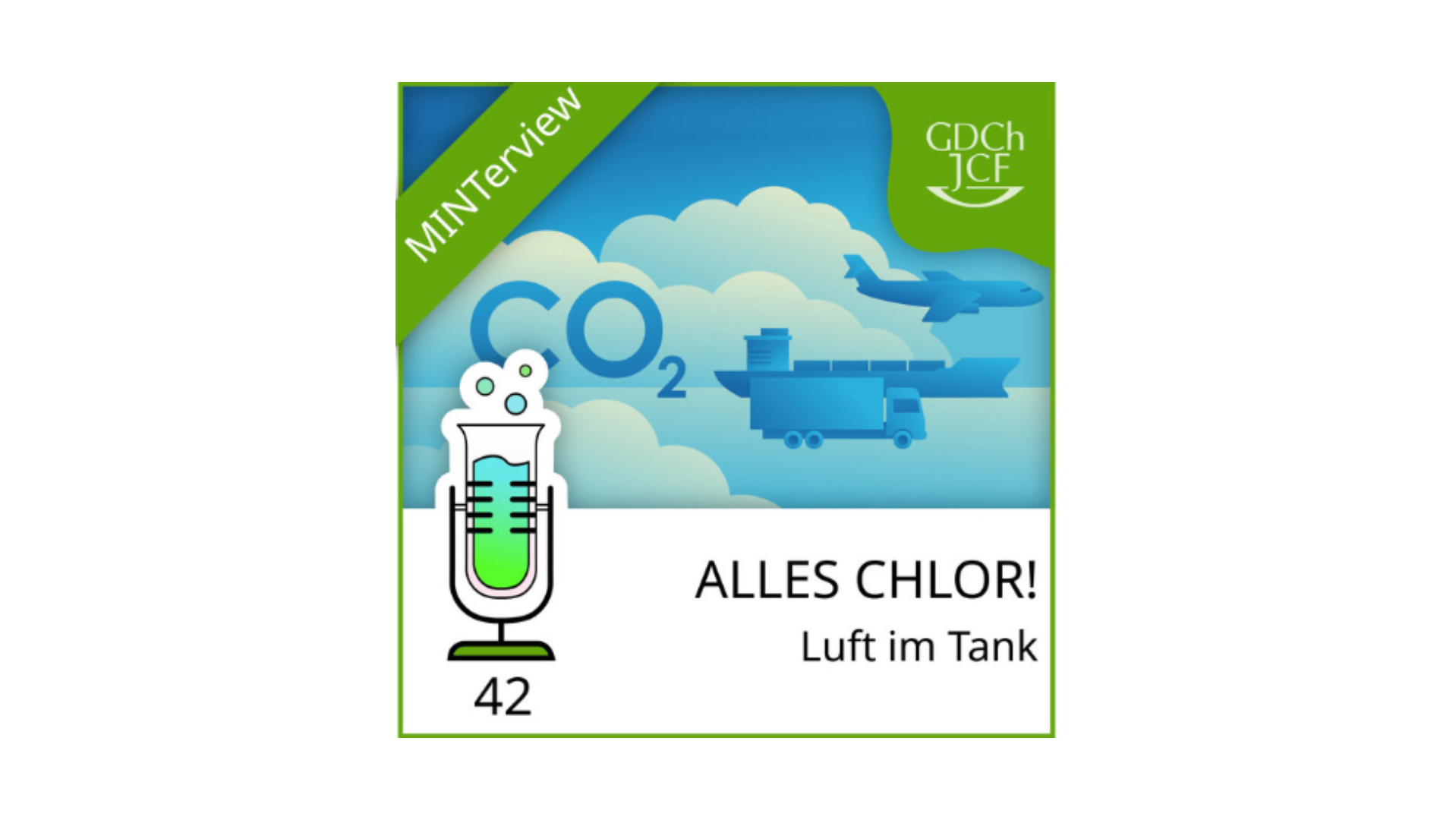- CO2 source and sink for ECO2Fuel: co-electrolysis of CO2 and renewable power into e-fuel, emergency power generation from e-fuel and capturing CO2 from engine exhaust
- Closing the carbon cycle by Carbon Capture and Usage (CCU)
- Worldwide unique benchmark in long-term tests of a carbon capture pilot plant
- Celebrated by international experts on carbon capture on June 14, 2022
World record: The CO2 scrubber in the RWE Innovation Center Niederaussem recently reached a special milestone with 100,000 operating hours. No other comparable system has so far achieved a similar runtime.
Since the commissioning of the research facility connected to the neighboring power plant in 2009, the widely applicable climate protection technology for reducing CO2 emissions from industrial exhaust gases has been continuously tested and improved.

The separated CO2 is used as a carbon source in several research and development projects in RWE’s innovation center for the production of sustainable fuels and chemicals and is also partly made available to external research projects.
For years, the carbon capture pilot plant at Niederaussem has been an important platform for international cooperation in the further optimization of this technology, which is essential for cross-sector climate protection.

Around 50 experts from industry, research and project sponsors from the Netherlands, Norway, Great Britain and the USA took part in a small ceremony to mark the special occasion in the Innovation Center. Among them are the partners of the transatlantic LAUNCH project, which aims at lowering the consumption and ageing of the solvent in CO2 separation systems.
Congratulations were received from the international partners of the current CCU projects at Niederaussem: ECO2Fuel (co-electrolysis of CO2 and water to C1-C4 alcohols) and the predecessor project LOTER.CO2M (co-electrolysis of CO2 and water to carbonaceous fuels), Take-Off (methanol and dimethyl ether from CO2 and H2 as intermediates for synthetic aviation fuel), and OCEAN (coupled co-electrolysis of CO2, water and glycerol to formate as intermediates for e-chemicals such as oxalic acid).
In the ECO2Fuel project, the carbon capture pilot plant at Niederaussem will be used to demonstrate multiple CO2 cycles by capturing CO2 from the exhaust gas of an emergency diesel generator running on synthetic fuels, converting the CO2 back into synthetic fuel via co-electrolysis, and again using this fuel to generate emergency power, closing the carbon cycle.
The R&D projects for CO2 capture in Niederaussem pave the way to a carbon cycle economy, for example in sewage sludge, biomass and waste incineration plants. If the utilization of CO2 and regenerative power generation is coupled, a closed carbon cycle for climate-neutral chemicals and fuels is built. This means a big step towards sector coupling and more security in the supply of electricity and raw materials, greater stability in the electricity grid and further significant reductions in emissions.
Background CO2 scrubbing at the Niederaussem Innovation Center
As part of international research projects, RWE is pushing ahead with the development of CO2 scrubbing technology. As the first system at a power plant in Germany, the pilot system for CO2 scrubbing was built in 2009 in cooperation with the companies BASF and Linde in the innovation center in Niederaussem.
Here, for example, it was clarified which CO2 solvents can be used to clean the flue gas of CO2 particularly effectively, economically and in an environmentally friendly manner. The solvent absorbs the CO2 from the flue gas in an absorber and is regenerated in a desorber, releasing the CO2. The CO2 obtained in this way can be used together with sustainably produced hydrogen for the production of fuels and basic chemicals as well as for energy storage.
The CO2 scrubbing pilot plant in Niederaussem supplies projects for CO2 use and sector coupling with high-purity CO2 and also serves as a test platform for the further optimization of the separation technology.
In the innovation center’s pilot plant, around 300 kilograms of carbon dioxide are captured per hour. This corresponds to a CO2 separation rate of 90 percent for the processed amount of flue gas. The plant has an excellent availability of more than 97% and has been in operation almost continuously since 2009.
The process and the technology required for CO2 scrubbing are designed in such a way that a wide range of industrial processes can be equipped with the appropriate systems. These include, for example, biomass, waste and sewage sludge incineration plants as well as cement and steel works.






